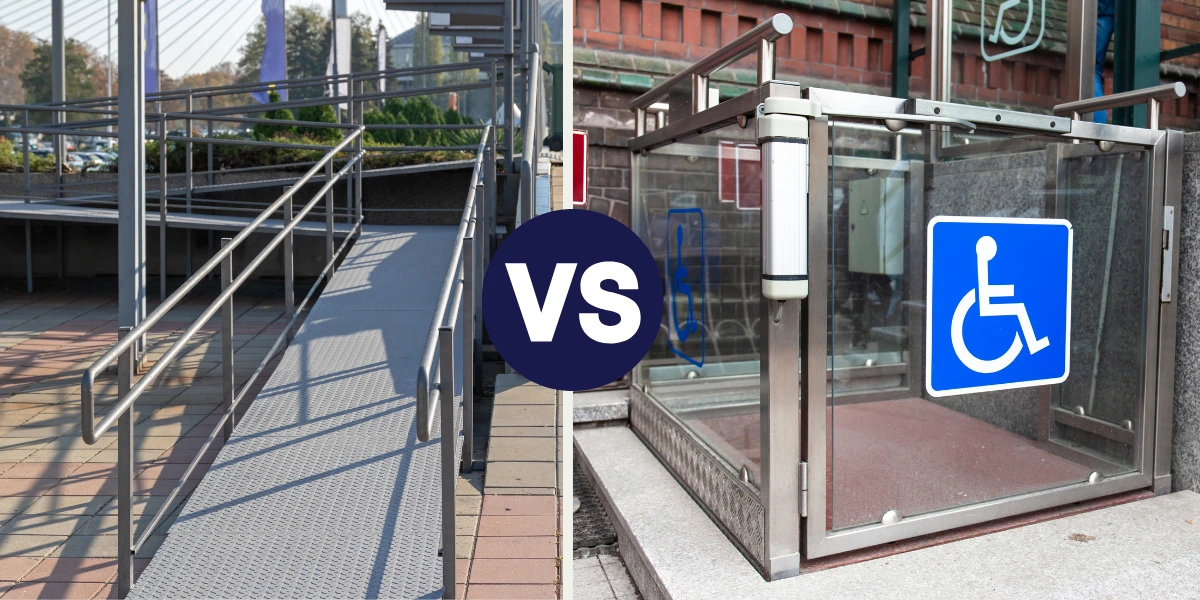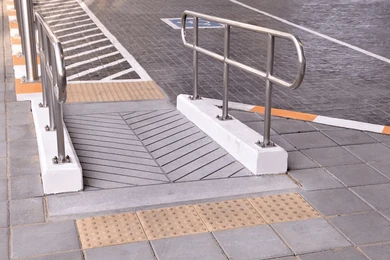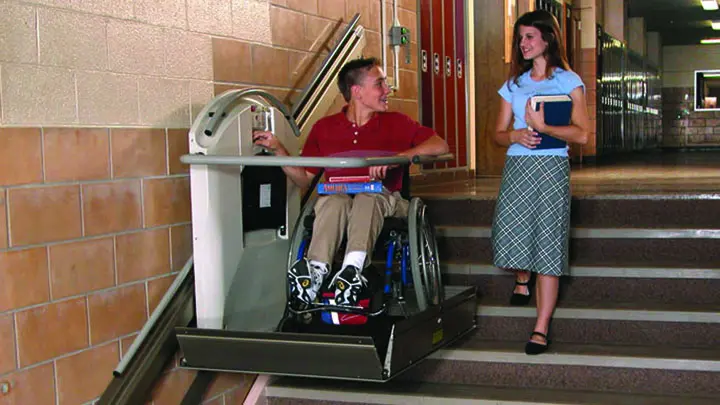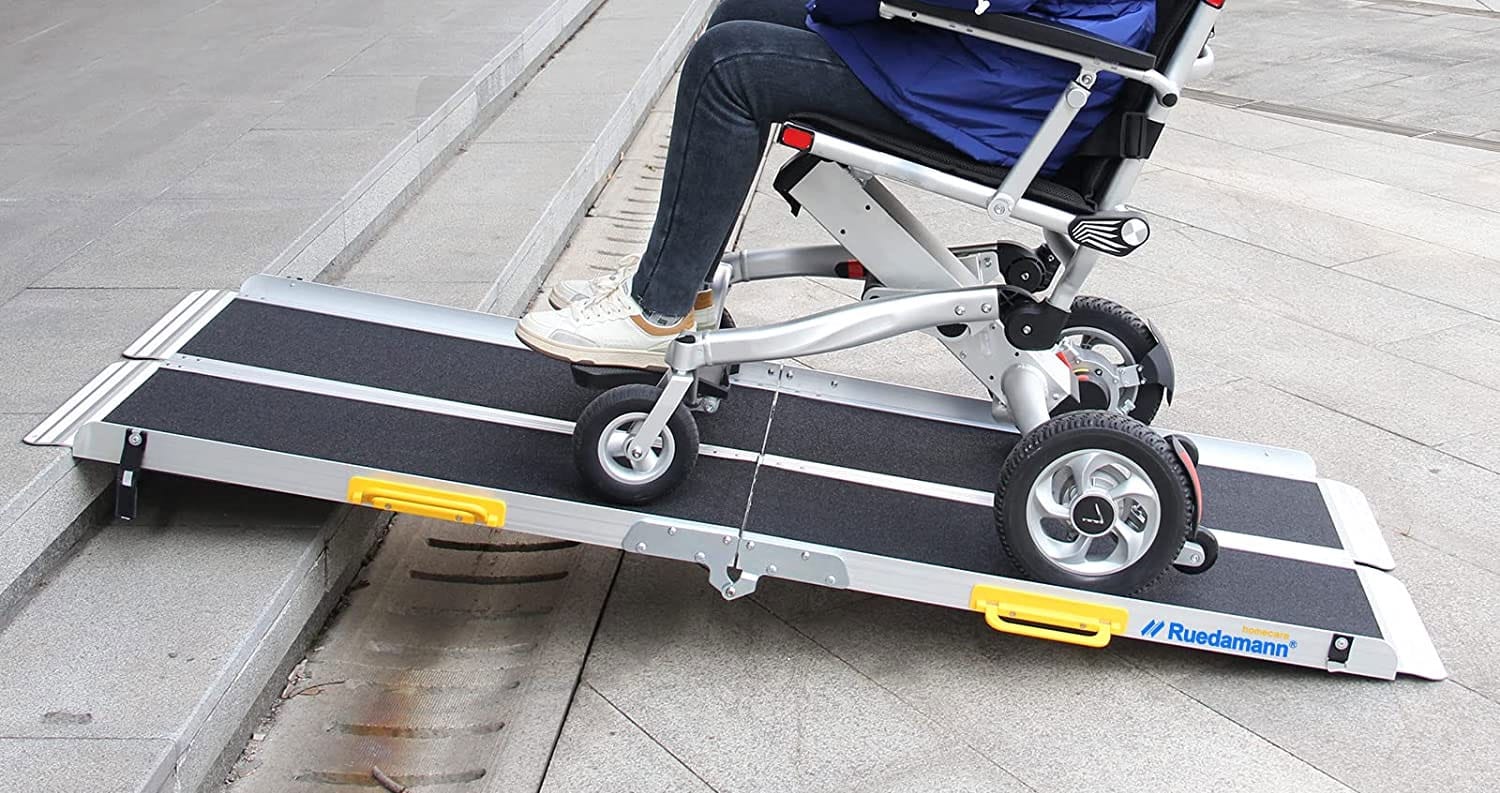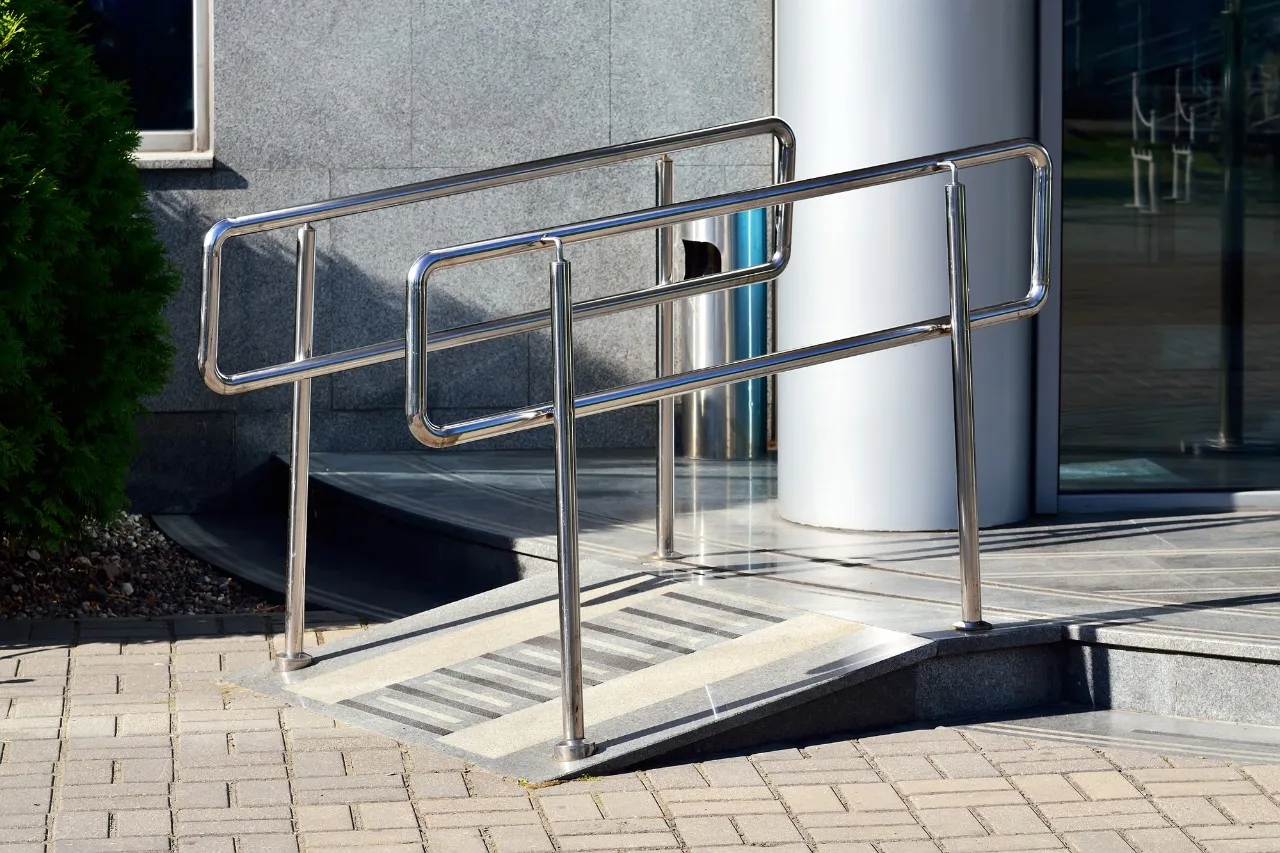If you’ve ever tried pushing a wheelchair over a step that feels like Mount Everest, you already know why ramps matter. And if you’re...
Disability Access Ramps vs Lifts: Which Is Right for You?
Ready to give your home an accessibility upgrade without losing an ounce of style? Both Disability access ramps and home lifts aim to do the same thing – help wheelchair users and others with mobility challenges get where they need to go – but each does it differently.
In this article, we’ll dive into the differences between ramps and lifts (especially for Melbourne homes), so you can figure out which option best fits your space, budget, and lifestyle. For context, about 18% of Australians (around 4.4 million) have some form of disability, so making homes accessible is important to many of us.
The Classic Incline: Ramps
Ramps are the classic solution: long sloping paths that let you roll or walk up gradually. They’ve been around since… well, forever (the ramp is essentially an inclined plane). In practice, that means building a ramp requires enough ground space to keep the slope gentle.
For example, Australian accessibility standards (AS 1428.1) generally require ramps no steeper than a 1:14 gradient. (Short ramps can be a bit steeper – up to 1:10 for very short runs.) For most homes, that implies switchbacks or landings unless you have a lot of room (the standards even specify how often flat landings must appear). The payoff is smooth, gradual access with no moving parts needed.
If you’ve ever pushed a pram up a gentle slope, you know the appeal: ramps don’t require any power or controls – just good old momentum. They can also look surprisingly sleek. Think powder-coated steel frames or a timber-veneer deck ramp integrated into your porch.
If you’re a DIY enthusiast, kits of aluminium sections let you bolt together a ramp yourself (these run roughly $850–$950 per metre in Melbourne for the boards alone) . Need something quick? A basic folding or portable ramp (like a suitcase ramp) can cost just a few hundred dollars and then tuck away when not needed.
Elevate Yourself: Wheelchair Lifts
Elevators aren’t just for skyscrapers. These days, vertical platform lifts (VPLs) are popping up in homes too. They work like a mini-elevator: you roll onto a platform at ground level, press a button, and up you go to your porch or deck. Because they move straight up, lifts can tackle high entries or multiple levels without needing a long sloped runway. That makes them ideal for tight Melbourne yards or heritage homes with steep steps.
A lift’s setup might look high-tech, but it’s simple in concept. Typically, these lifts have safety gates and often weather covers for outdoors. They’re electrically powered (many have backup batteries for blackouts). The trade-off is cost: quality home platform lifts in Australia often start around $15,000 and up. You get push-button convenience – no strenuous pushing or uphill battling. However, it comes at a cost.
Quick Comparison of Disability Access Ramps & Lifts
| Aspect | Ramp | Lift |
|---|---|---|
| Best For | Low to moderate rises (1–3 steps) | Steeper or taller rises (6+ feet); tight spaces |
| Space Required | Long footprint (e.g. ~14m run per 1m rise) | Small footprint; just a platform and shaft |
| Ease of Use | Manual (pushing wheelchair or strolling) | Powered (button operation; great for scooters) |
| Cost | Lower ($300–$5,000+ depending on ramp type) | Higher (often $15k–$60k installed) |
| Maintenance | Minimal (cleaning; check for damage) | Moderate (mechanical parts; annual servicing) |
| Permits Needed | Yes (fixed ramps usually need a permit & AS 1428.1) | Yes (building permit and standards compliance) |
| Aesthetic Impact | Blends into landscaping/decking seamlessly | Sleek, modern; can be discreet if enclosed |
Looking at that, you might already have some clues. A ramp is a solid bet if your entry has a gentle rise and you have plenty of room – it’s low-tech and easier on the wallet. In fact, Melbourne’s Vitalease even offers custom ramp design and installation services that blend style with AS 1428.1 compliance. On the other hand, if your steps are very high (or you have multiple floors), a lift may be the only practical solution – especially if your block is compact.
Choosing What’s Best
Ultimately, the decision comes down to your specific needs. Key factors to consider:
- Elevation & space: How high is the entry and how much horizontal room is available? A tall step (say 2m) would need about 28m of ramp at 1:14 – often impractical on a normal suburban lot. Compact yards might suit a lift, while homes with longer slopes can use ramps.
- User needs: Will someone have to push the wheelchair up? Even a short ramp takes effort. Power wheelchair or scooter users (and older adults) often prefer a button-push lift . Think long-term – ramps are sturdy and low-maintenance, but lifts give more independence if mobility declines.
- Budget & funding: Portable ramps and threshold wedges start in the low hundreds. A modular aluminium ramp might be a few thousand for several metres, and a custom timber deck ramp can hit ~$5,000 for a 3m span . In contrast, home lifts usually start around $15k–$20k. If you’re eligible, NDIS or home modification grants may cover some of the cost of ramps and sometimes lifts.
- Style & DIY: Ramps can be made of wood, composite, aluminium or concrete to match your home’s style. Many modular kits are DIY-friendly. Lifts are more like appliances – you roll on, someone else usually installs them (you might need an electrician or builder). Consider what fits your DIY skills and design vibe.
- Professional help: If in doubt, consult accessibility specialists. In Melbourne, companies like Vitalease handle everything from design and permits to installation , ensuring compliance with local building codes and AS 1428.1.
Also remember the rules: in Victoria, fixed outdoor ramps or lifts usually require a building permit and must meet AS 1428.1 (e.g. slopes ≤1:14, width ≥1m, proper handrails). New Victorian building standards even mandate step-free entry for all new homes – basically making ramps or lifts a standard feature in modern builds.
Whether you pick a ramp or a lift, you’re making your home welcoming. Imagine the peace of mind knowing anyone – a mum with a stroller, a neighbour carrying groceries, or your best mate on wheels – can get to your front door easily. Now that’s accessibility done right!
Frequently Asked Questions
What are the local building code requirements for disability access ramps in Melbourne homes?
In Melbourne, permanent ramps must comply with Australian Standard AS 1428.1, which requires a maximum slope of 1:14, a minimum width of 1 metre, and landings at regular intervals. Building permits are usually required for fixed ramps.
Are wheelchair lifts suitable for Melbourne’s weather conditions?
Yes, residential wheelchair lifts are designed to handle Melbourne’s variable climate. Outdoor lifts often include weather-resistant covers, drainage, and protective finishes to keep them safe and durable throughout wet winters and hot summers.
Can I get financial support for installing a ramp or lift in my Melbourne home?
If you’re an NDIS participant, you may be eligible for funding to cover ramps or lifts as part of home modifications. Local councils and state government programs may also provide assistance for accessibility upgrades.
How long does it take to install a ramp or lift in Melbourne?
A simple modular ramp can sometimes be installed in a day or two. Custom-built ramps may take longer, depending on design and permits. Residential wheelchair lifts generally require more preparation, often taking a few weeks from permit approval to final installation.

